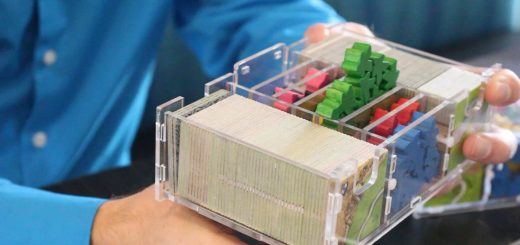Sustainable innovation: How adapting agricultural innovation could help with future water shortages in Alberta

By Christian Kindrachuk, Web Editor
Western Canada is on track to lose portions of its glacial volume, which could cause water shortages in Alberta. However, mitigating the disruption this could cause may be possible by adapting sustainable innovations.
A study that came out in August of this year from Nature Climate Change proved worrisome for the future of Alberta’s melting glaciers, which in turn will affect water availability in the province.
Another study from UBC shows that Western Canada is set to lose 70 per cent of its glacial ice volume by the year 2100.
Israel Dunmade, an associate professor in the environmental science department at Mount Royal University, says global warming is causing melting ice and can lead to further consequences.
“Currently, we have limited sources of water,” Dunmade says. “However, it is the glacier that is feeding these rivers. As the temperature increases — that is, the ambient temperature increases — you’ll find out that there’s a lot of evaporation and that will reduce the amount of water that’s available for use.”
Another aspect to take into consideration is the competition for where the available water goes.
“There’s a competition between what is used for agriculture, what is used for public consumption and what is used for the industry,” says Dunmade.
There are multiple ways that this can be addressed, such as repurposing wastewater, finding ideal times to water crops with minimal water loss and growing imported produce that does not require as much water to grow.
The Alberta Agriculture and Forestry Annual Report for 2019-2020 notes how important the agriculture sector is for the future of Alberta’s economy.
“Alberta’s agriculture, food and forest industries are cornerstones of our economy, and will be essential contributors to the diversification and rebuilding of our economy as we recover from the effects of the COVID-19 pandemic,” read a statement from Minister Devin Dreeshen.
The province recently announced they will invest $244.5 million to modernize irrigation district infrastructure and increase water storage capacity, according to a government press release.
“An important part of our economy, the agri-food sector contributes $9.2 billion in gross domestic product (GDP) and employs about 77,000 Albertans,” reads the release.
Between the Alberta government, the Canada Infrastructure Bank and several irrigation districts, the investment into this infrastructure will total $815 million. Per the technical fact sheet, the project will focus on increasing water efficiency, which will offer greater storage capacity and water security.
While this is one aspect of the province’s recovery plan, Alberta also plans to implement sector-specific strategies for agriculture, technology and innovation to help drive diversification.
According to Dunmade, one aspect of innovation that can play a role in creating new advancements while being environmentally cautious is lifecycle engineering.
“When we talk about lifecycle, we are talking about closing system loops,” he says.
“For example, you look at production of goods, you look at the material that we use — we need to consider, what type of material do we use? How much energy does it require? How much water does it require?”
This kind of engineering plays a role in new innovations such as micro-irrigation.
“The way it works is that it’s like a tube that is laid on the field and there are holes in those tubes. The holes are centered at the root of the crops and the plants that they want to [irrigate],” Dunmade says.
Countries like Israel, for example, use micro-irrigation as opposed to flood irrigation, which helps take into account the environmental factors of the region.
“Flood irrigation system is an inefficient method as it involves just directing the water from the river channel or from the well onto a field, and that exposes the water to a lot of evaporation,” says Dunmade.
Dunmade says education is also necessary for an understanding of how we can become sustainable, while also looking into the economic and social well-being of any sustainability innovation.
“A lot of effort is going on globally because we all know the implication of all these things on the environment — and the benefit of it is that it is not only good for the environment, it’s also economically profitable.”




